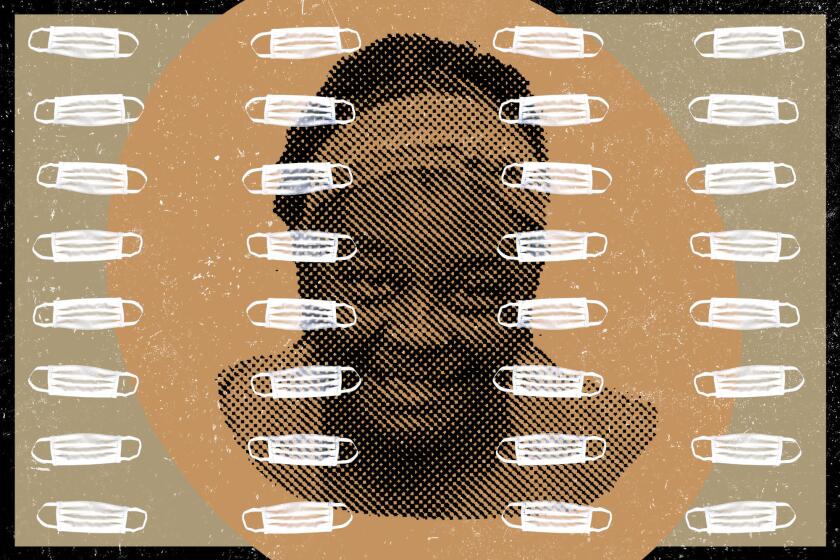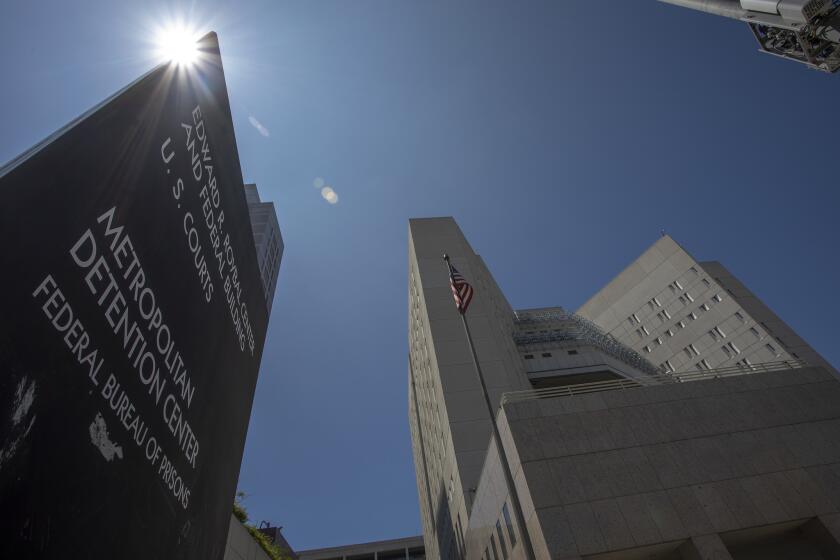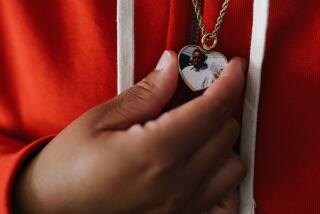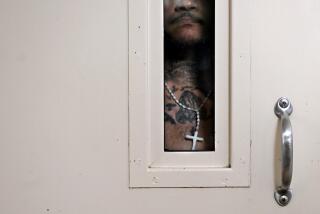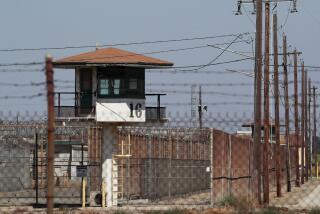COVID-19 continues to roil California prisons, jails as officials face new criticism
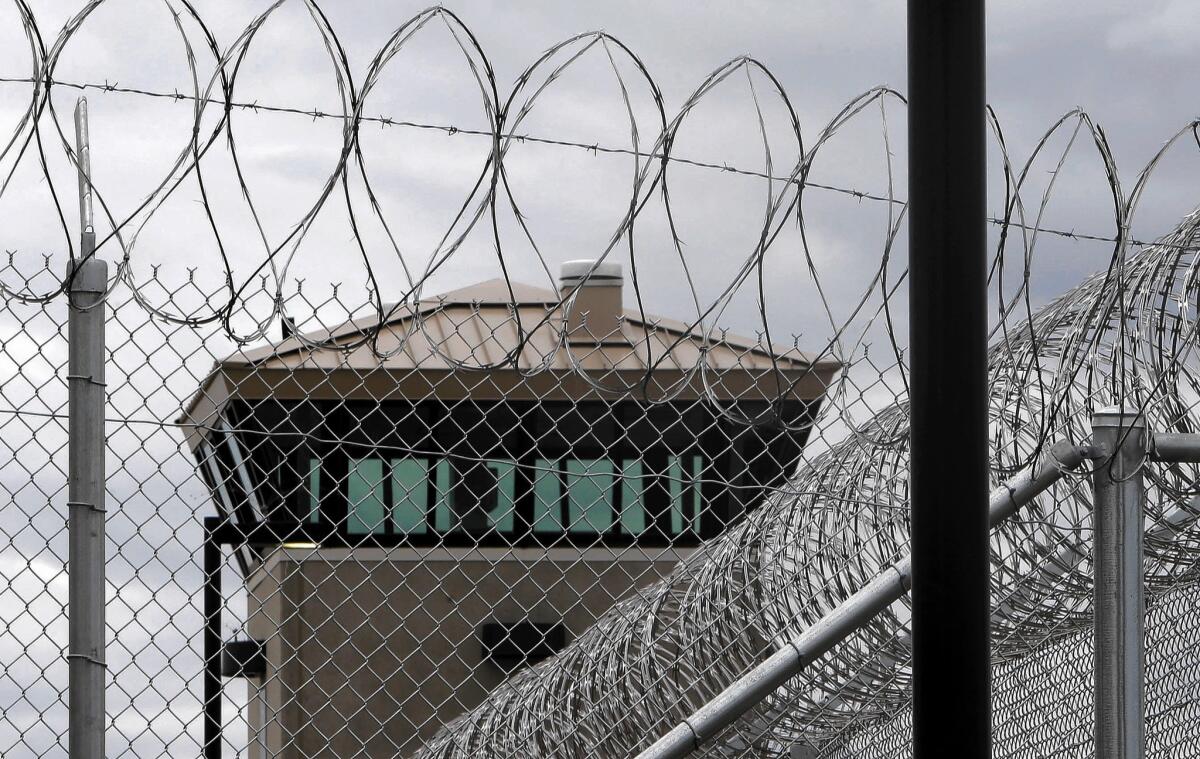
Inside the state prison system’s Substance Abuse Treatment Facility in Kings County, David Cauthen has spent nearly five weeks on a hunger strike to protest what he sees as indifference and ineptitude by the California Department of Corrections and Rehabilitation at stopping a coronavirus outbreak there that has infected more than 1,089 inmates and killed one in recent days.
“Officers, nurses and even doctors only wear masks when it is convenient,” he stated in an email, “and the only time it is convenient for them is when the facility has visitors.”
For the record:
9:56 a.m. Nov. 29, 2020An earlier version of this story stated that 6,000 CDCR guards had tested positive statewide, including 117 guards at High Desert State Prison and 72 at Pelican Bay. Those figures include guards and staff.
Nearby in Fresno County, Dist. Atty. Lisa Smittcamp is equally unhappy with how state prison officials are handling the virus behind bars. Her jail, she said, was overwhelmed with convicted inmates who normally would be moved to state prisons but who were now stuck in limbo as prison officials again halted those transfers Wednesday. With limited space in county jails, she said, people arrested are often quickly released to keep the local facility at a safe capacity.
“You cannot shut off the prisons,” Smittcamp said. “One hundred percent, it has impacted public safety.”
Over eight months into a pandemic that has been especially virulent in crowded settings, the Department of Corrections and Rehabilitation is still grappling with new outbreaks and old criticisms as the coronavirus continues to surge in some of its 35 prisons. With a large wave of cases hitting across the state, some say the corrections department has failed to enforce its own policies and protective measures, and worry that further flare-ups could wind up filling community hospital beds in places already stressed.
The department currently reports more than 3,600 active cases of the virus, with six facilities across the state having outbreaks with over 100 cases among inmates. The Substance Abuse Treatment Facility has reported more than 900 new infections in the last two weeks, the department says.
Inmates who made masks and furniture for as little as 35 cents an hour say they felt pressure to stay on the job, even as the coronavirus spread through the prison factories.
Nearly 6,000 guards and other staff including nurses and administrators have also tested positive since the pandemic began — including 117 in the last two weeks at High Desert State Prison in Lassen County — a source of consternation as the department concedes that its staff is carrying the virus behind bars, even as it admits some employees have refused testing and resisted effective masks.
Recently, 13 workers were sanctioned for noncompliance with regulations on personal protective equipment at Pelican Bay State Prison in Del Norte County in California’s far north, according to the corrections department, as county officials worried about a lack of information for contact tracing of coronavirus-positive prison staff. The situation prompted state Sen. Mike McGuire (D-Healdsburg) to complain at a Nov. 19 oversight hearing that the lack of enforcement and cooperation was “not good for the community.” Seventy-two guards and staff at Pelican Bay have contracted the virus, 18 of them in the last two weeks, according to the department.
Though prison officials are quick to point out they have reduced the inmate population by 22,000 since March, bringing it to its lowest number in three decades — and recently have begun more disciplinary actions for PPE failures — lawmakers, advocates, incarcerated people and county government officials contend that the agency has been too slow to learn lessons. There is little transparency about how decisions are being made and what is happening behind prison walls, they say.
Most alarming is the glacial pace of releases for elderly and medically vulnerable inmates, say advocates and some lawmakers — and the lack of answers as to why. It’s a population that some argue presents the least risk for committing new crimes but has the highest risk for serious COVID-19 illnesses.
“It sounds like the decision maker is somewhere up in the ether,” said state Sen. Hannah-Beth Jackson (D-Santa Barbara) at the oversight hearing, speaking of how those determinations are handled. “It seems there is way too much authority here within prisons to make those decisions unilaterally and frankly without a whole lot of accountability.”
Faced with the stark reality that vulnerable inmates in California’s crowded prisons would die unless he reduced the incarcerated population, Gov. Gavin Newsom pledged to examine how to let some of them go early in the pandemic.
Mark Armendo was found unresponsive in a jail cell in the San Diego County city of Vista in June and died two months later at UCSD Medical Center.
But Newsom and corrections officials instead largely have cut the prison ranks in two ways. First, they released about 7,400 inmates who had only a few months remaining on their sentences. Then they left more than 8,000 inmates due to begin prison sentences stockpiled in the county jails — passing the burden to California’s sheriff’s departments. About 7,000 of those prison-bound inmates remain in county jails, according to the state corrections department.
Since resuming accepting county jail inmates Aug. 28, state prisons have received about 3,300 inmates from 38 counties using a strict protocol of quarantining and testing, according to the agency. But in Los Angeles County alone, nearly 3,000 prisoners await transfer, a number likely to grow with Wednesday’s freeze. Since spring, the jail population has soared from 11,700 to more than 15,000.
“That is a large chunk of people who are sitting in our jails when they should be in state prison, and they are a double problem because these are people we cannot release any other way,” Sheriff Alex Villanueva said during an online news conference Wednesday. “This is harming our ability to keep the jail population decompressed and raises the risk of COVID-19 to inmates and staff alike.”
But of the more than 8,200 medically at-risk inmates who live in settings that make airborne transmission of the virus hard to control — such as cells with open bars — less than 1%, or about 80 people, have been released, according to James King, a state campaigner for the Ella Baker Center for Human Rights, who testified at the Senate hearing.
“We have increased the proportion of highly vulnerable [people] in prison by letting out the less vulnerable,” said Dr. Stefano Bertozzi, UC Berkeley professor of health policy and management. “We haven’t actually let the people out who most should be let out.”
The corrections department did not provide state numbers for medical releases despite multiple requests.
Michael Bien, an attorney who represents inmates in federal litigation, said the effects of not releasing incarcerated seniors will be felt publicly in nearby communities if prison infections continue to soar.
“They will begin to fill the hospital beds near these prisons in the next three to four weeks if COVID continues to spread,” he said. “Everyone who dies from now on in the prisons will be on the [medically fragile] list.”
Bien and others contend the decision to keep the medically vulnerable inmates incarcerated has political overtones. Many of those under consideration were violent criminals, he said. Their average age is 63, and many have indeterminate sentences that have left them behind bars for decades.
More than 200 inmates at a federal detention center in Los Angeles have contracted the coronavirus, forcing prison officials to lock down the facility.
Bien and Bertozzi said politicians including Newsom, who has weathered scathing press in recent weeks, seem to be weighing the risk of releasing violent offenders. At the same time, the corrections department has undergone a change of leadership, with its head retiring in September and Kathleen Allison, a former warden at the Substance Abuse Treatment Facility who began her career at the agency in 1987 as a medical technical assistant, taking over.
“Frankly, I don’t understand the political logic,” Bertozzi said. “You watch someone without legs rolling across the yard in a wheelchair, you think to yourself, yeah I can imagine a scenario where that person is a danger to society, but it’s doubtful.”
Some legislators are also asking for answers about how the department is ensuring its employees are taking necessary precautions — concerned that resistance among their ranks is a danger to preventive efforts and has not been adequately handled by state authorities.
Bertozzi said this month that the outbreak at the Substance Abuse Treatment Facility had started in an area where civilian staffers in a facility that packages food mixed with inmate workers in a kitchen. That food packaging facility, run by the California Prison Industry Authority, which operates about 100 commercial enterprises inside prisons, is likely to remain open as an essential business, despite other outbreaks linked to factory operations and a decision by the corrections department to shut Prison Industry Authority facilities deemed nonessential. Neither state agency answered a request for clarification.
Dr. Joseph Bick, statewide director of healthcare service for the corrections department, also testified this month that until a recent order requiring all staffers to wear surgical masks provided by the department, guards and other staffers had been using “bandannas and gaiters and masks with valves and all types of things that are not really going to achieve our goal.”
State Sen. Nancy Skinner (D-Berkeley) replied, “It’s never too late, but it is rather late” to be requiring staff to use effective PPE. “It’s disappointing.”
Lawmakers also questioned Bick and Connie Gibson, director of the department’s Division of Adult Institutions, about the number of guards who had refused coronavirus testing, but neither was able to provide details on how many state employees fell into that category. Gibson said it was only “a few,” but she was “very concerned about staff that refuse to test.”
The corrections department did not provide a number or percentage of employees who had refused testing despite multiple requests.
Families of those behind bars, who have been forbidden from seeing their loved ones for months, said the real toll of the prison system’s failure to control the virus was on them.
“I feel it in my soul and my stomach,” said Shondra Caldwell, a mother of two teenage daughters whose husband is incarcerated and contracted COVID-19. The diagnosis, she said, made her “hysterical,” and she sees anxiety wearing on her girls.
“There is nothing right now about the situation that is under control,” she said. “No one deserves that.”
More to Read
Sign up for Essential California
The most important California stories and recommendations in your inbox every morning.
You may occasionally receive promotional content from the Los Angeles Times.
